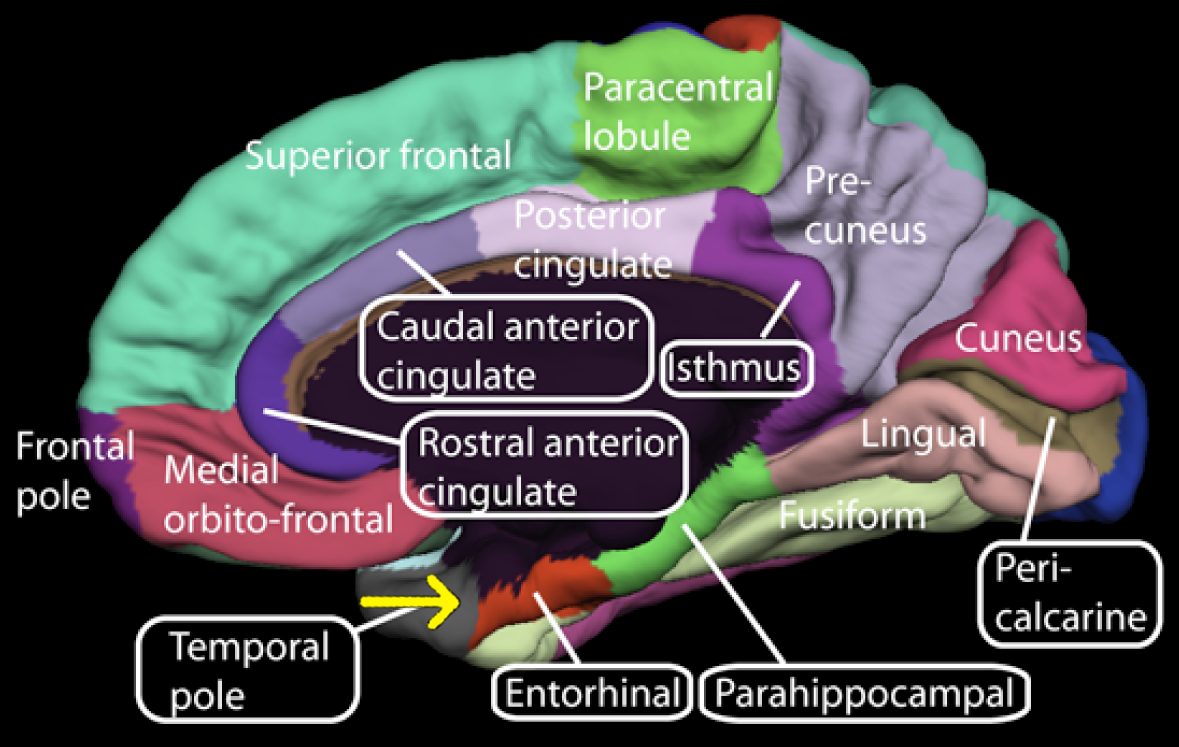This blog entry refers to a study involving fine anatomical details that many readers may not need. So we'll start with a brief non-technical summary of the findings:
Memory impairment due to aging is not a uniform process. Some kinds of memory get worse first, others are more durable. That's because different kinds of memory are controlled by different parts of the brain and some parts deteriorate earlier than others with aging. Specifically this study found that the ability to identify an object that was recently seen (object memory) weakens with age even though the ability to remember where an object was placed (spatial memory) stays reletively intact. This was collaborated by the imaging data that showed loss of neural activity in the brain area responsible for object memory and more normal activity in the brain area responsible for spatial memory while performing the different tasks.
Image by Hagmann P, Cammoun L, Gigandet X, Meuli R, Honey CJ, et al., via Wikimedia Commons
The entorhinal cortex is of particular interest in Alzheimer’s Disease (AD). It is the area that mediates communication between the hippocampus and the neocortex therefore vitally involved in the formation and loss of memory. The entorhinal lobe is functionally divided into an anterolateral region that has to do with object memory and an posteromedial region that has to do with spatial memory. The former - the anterolateral entorhinal lobe is the area where the worst deposition of neurofibrillary tangles is found in the AD brain.
A recent study by University of California, Irvine-led researchers used fMRI to monitor the levels of neuronal activity in the two regions of the entorhinal lobe while the subjects performed object memory tasks vs spatial memory tasks. There were 2 groups of subjects: young adults (28-31 years old) and cognitively healthy older adults (64-89 years old). The object memory task tested accuracy in recognition of previously viewed pictures of objects, the spatial memory task tested memory of spatial location of objects. The older adults group performed significantly worse than the youth group in the object memory test while showing loss of activity in the anterolateral entorhinal lobe. However, they performed better in the spatial memory test with no loss of activity in the posteromedial entorhinal lobe.
The researchers concluded that memory impairment with aging is a selective process. Object memory impairment occurs first due to loss of structural integrity in specific parts of the brain. With further studies the researchers hope to arrive at a diagnostic tool for early detection of AD.

